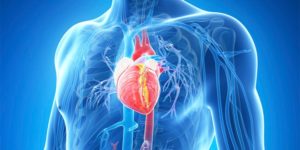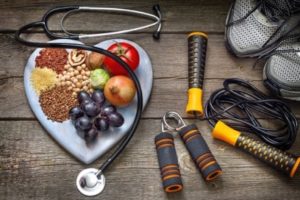Stroke
A stroke, or “brain attack,” occurs when blood circulation to the brain fails. Brain cells can die from decreased blood flow and the resulting lack of oxygen. There are two broad categories of stroke: those caused by a blockage of blood flow and those caused by bleeding into the brain. A blockage of a blood vessel in the brain or neck, called an ischemic stroke, is the most frequent cause of stroke and is responsible for about 80 percent of strokes. These blockages stem from three conditions: the formation of a clot within a blood vessel of the brain or neck, called thrombosis; the movement of a clot from another part of the body such as the heart to the brain, called embolism; or a severe narrowing of an artery in or leading to the brain, called stenosis. Bleeding into the brain or the spaces surrounding the brain causes the second type of stroke, called hemorrhagic stroke.
Two key steps you can take will lower your risk of death or disability from stroke: control stroke’s risk factors and know stroke’s warning signs. Scientific research conducted by the NINDS has identified warning signs and a large number of risk factors.
A risk factor is a condition or behavior that occurs more frequently in those who have, or are at greater risk of getting, a disease than in those who don’t. Having a risk factor for stroke doesn’t mean you’ll have a stroke. On the other hand, not having a risk factor doesn’t mean you’ll avoid a stroke. But your risk of stroke grows as the number and severity of risk factors increases.
Some factors for stroke can’t be modified by medical treatment or lifestyle changes.
- Age. Stroke occurs in all age groups. Studies show the risk of stroke doubles for each decade between the ages of 55 and 85. But strokes also can occur in childhood or adolescence. Although stroke is often considered a disease of aging, the risk of stroke in childhood is actually highest during the perinatal period, which encompasses the last few months of fetal life and the first few weeks after birth.
- Gender. Men have a higher risk for stroke, but more women die from stroke. Men generally do not live as long as women, so men are usually younger when they have their strokes and therefore have a higher rate of survival.
- Race. People from certain ethnic groups have a higher risk of stroke. For African Americans, stroke is more common and more deadly—even in young and middle-aged adults—than for any ethnic or other racial group in the United States. Studies show that the age-adjusted incidence of stroke is about twice as high in African Americans and Hispanic Americans as in Caucasians. An important risk factor for African-Americans is sickle cell disease, which can cause a narrowing of arteries and disrupt blood flow. The incidence of the various stroke subtypes also varies considerably in different ethnic groups.
Family history of stroke. Stroke seems to run in some families. Several factors may contribute to familial stroke. Members of a family might have a genetic tendency for stroke risk factors, such as an inherited predisposition for high blood pressure (hypertension) or diabetes. The influence of a common lifestyle among family members also could contribute to familial stroke.







